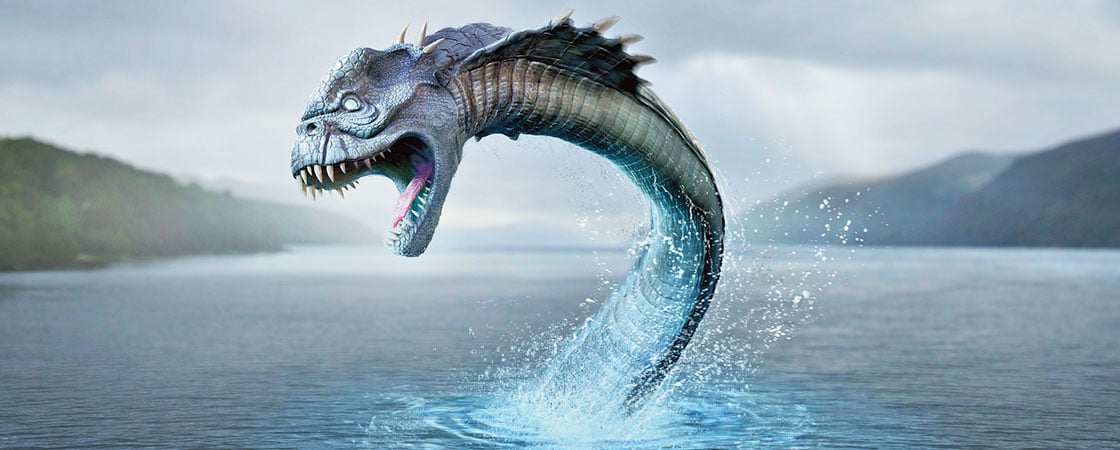On an April afternoon in 1933, Aldie and John Mackay were driving along the shores of one of Scotland’s largest lakes, Loch Ness. (In Scotland, lakes are called “lochs,” pronounced locks.) The road—the A82—was brand new, and Aldie was enjoying the view from the car window.
The Scottish Highlands are often rainy, but this day was bright. The trees were vivid green, and even the murky waters of the loch seemed to sparkle.
Then Aldie saw something she would never forget. The water rippled. A giant creature seemed to rise out of the loch. It appeared to be black, with a humped back. Trembling with fright, Aldie grabbed her husband’s arm and pointed.
“Stop!” she gasped. “The beast!”
John screeched the car to a halt. For several minutes, the stunned couple stared as the creature seemed to be “rolling and plunging.” It disappeared and then reemerged in another part of the loch. And then—it was gone.
For a few days, Aldie and John kept quiet about what they had seen. After all, who would believe them? A monster in Loch Ness? It sounded preposterous.
Ultimately, though, the couple couldn’t resist sharing their remarkable story, and the news soon spread. As the Mackays had predicted, some people rolled their eyes and laughed. But many others listened with fascination. There had always been something mysterious about Loch Ness, something spooky. For centuries, people from nearby towns had whispered stories of a creature, a huge and terrifying beast that, according to some tales, lured children to their deaths. Another story, dating back to the sixth century, told of a water monster that sought to devour farmers working nearby. Because of these tales, to many locals, the Mackays’ story was completely plausible.
Over the next few weeks, more people claimed to have seen the creature.
“It was big as an elephant,” said one farmer.
“It was horrible,” reported a schoolteacher. “It had a head like a cobra.”
But . . . what was it?
On an April afternoon in 1933, Aldie and John Mackay were driving along the shores of one of Scotland’s largest lakes, Loch Ness. (In Scotland, lakes are called “lochs,” pronounced locks.) The road—the A82—was brand new. Aldie was enjoying the view from the car window.
The Scottish Highlands are often rainy, but this day was bright. The trees were vivid green. Even the murky waters of the loch seemed to sparkle.
Then Aldie saw something she would never forget. The water rippled. A giant creature seemed to rise from the loch. It appeared to be black, with a humped back. Aldie trembled with fright. She grabbed her husband’s arm and pointed.
“Stop! The beast!” she gasped.
John stopped the car. For several minutes, the couple stared. The creature seemed to be “rolling and plunging.” It disappeared and then appeared in another part of the loch. And then it was gone.
For a few days, Aldie and John kept quiet about what they had seen. After all, who would believe them? A monster in Loch Ness? It sounded preposterous.
Ultimately, though, the couple couldn’t resist sharing their unbelievable story. Soon the news spread. As the Mackays had predicted, some people rolled their eyes and laughed. But many others were fascinated. There had always been something mysterious and spooky about Loch Ness. For centuries, people from nearby towns had told stories of a huge and terrifying beast. According to some tales, the beast lured children to their deaths. Another story told of a water monster that tried to eat farmers worked nearby. Because of these tales, to many locals, the Mackays’ story was completely plausible.
Over the next few weeks, more people claimed to have seen the creature.
“It was big as an elephant,” said one farmer.
“It was horrible,” reported a schoolteacher. “It had a head like a cobra.”
But . . . what was it?

